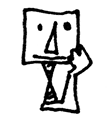
From environmental breakdown to infectious disease and the spectre of war, contemporary living is increasingly wrought by anxiety. Throughout history, times of crisis have often been represented in art and literature. This form of anxious expression is emotionally striking, but can also lead us to reflect on our present state of precarity.
Crisis often feels like the crux of living today—often formless, but always on the edge of imminence. Our time is one riven by anxiety, with a hyperawareness of jeopardy. The presence of bad news seems to be existentially metabolized by our sense of self, even as the animus of the contemporary world makes anxiety both an individual sensation and a societal experience.
Anxieties are proleptic, trained on the eggshell fate of a daily universe no longer legible with a baseline of steady meaning. Despite how endemic many disorders and conditions seem to be, there is still something strangely ironic about the lingering stigma of mental illness. Perhaps something structural in the provenance of depression and anxiety can be explained by the ways in which personal experiences are caught up in the future of our capriciously mobile world.
According to a landmark survey from September 2021, led by researchers at the University of Bath, modern anxieties about the climate emergency are causing distress, anger, and other negative emotions in thousands of 16–25-year-olds. Ten thousand respondents in ten countries experienced this ‘eco-anxiety’, with fears about the future of the planet having an adverse effect on the daily mental health of young people all over the world.
Beyond the huge, seismic factors at play on the world stage, the frangibility of mental health and the increase in anxiety as a diagnosis is also caused by the normal strains of reality—the stress of airports, overworking in remote siloes, the threat of disease, general insecurity, and powerlessness. It often feels like the synthetic reality of life is anxiety-inducing.
Diagnosing Anxiety
While th








